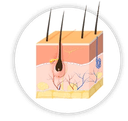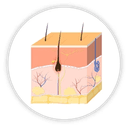Your cart (0)
3X*
Better hair density
With Traya Regime Compared
To Minoxidil 5% Alone.
93% SAW RESULTS* IN 5 MONTHS
*Results based on a 6-month independent CRO-led clinical study conducted on males experiencing stage 2 - 4 hair thinning

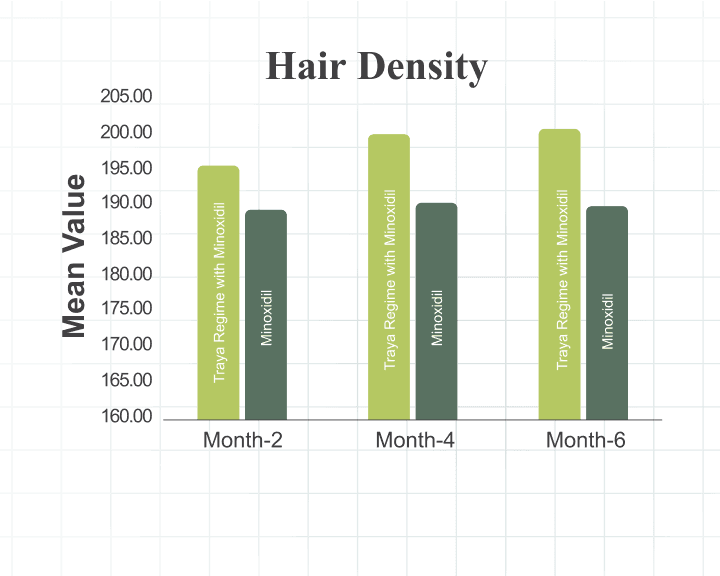
Our proven, science-backed approach delivers real results. While many believe that hair thinning is temporary and will resolve on its own, the truth is, lasting improvement comes with understanding the underlying cause. We’re here to help you get to the bottom of your hair concerns and provide you with effective solutions based on sound scientific principles.

Is it just a phase or something more?
Losing 50 to 100 strands of hair is a normal part of your body's renewal process. However, if this hair loss continues for more than a month and you notice reduced volume or thinning in certain areas, it could be a sign of an underlying condition.
Why am I losing 50-100 strands of hair ?
It is because hair grows in phases:
Anagen:The growth phase LASTS 2 TO 8 YRS
Catagen:Transition phase LASTS 10 DAYS
Telogen:Resting phase LASTS AROUND THREE MONTHS
Exogen:New hair phase THE SHEDDING OF OLD HAIR AND GROWTH OF NEW HAIR
Each strand follows a natural four-phase cycle. At any given time, around 90% of your strands are in the anagen (growth) phase, while the remaining are in the resting or renewal phases. However, when the cycle is disrupted, each new round may produce strands that are finer, weaker, and fewer in number. Over time, this gradual change can lead to noticeably reduced density and visible thinning.
Thinning often means the growth cycle is weakening, producing finer strands and fewer of them. Over time, follicles may stop working entirely.
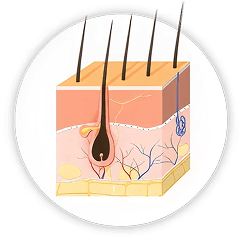
Anagen
(Growth Phase)
Lasts 2-8 Years

Catagen
(Transition Phase)
Lasts 10 days
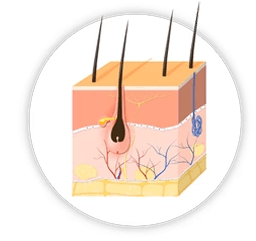
Telogen
(Resting Phase)
Lasts about 3 months
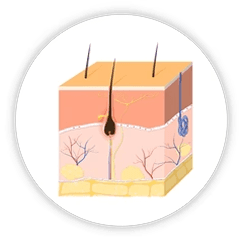
Phasing out
(New Hair Phase)
Shedding of old hair and & growth of new hair
How do I know what’s causing a change in my hair volume?
One surprising thing about these conditions is how organised they are, they tend to follow specific patterns. Identifying the pattern is the first step in understanding what’s really going on.
Do You Know?
If Your Hair Cycle Is in the Growth Phase or the Rest Phase?

1. Male/Female Pattern Baldness
- Family history, 82% of the times And just to be clear, family history includes all blood relatives on the maternal and paternal side
- Hair thinning for over 6 months.
- Patterned Changes In men: receding hairline and thinner crown. In women: widening part and more visible scalp.
- Decreased density or volume
- No recent health history (this does not include comorbidities)
How does it happen? Certain internal changes can trigger a chain reaction: receptors at the root level begin to interfere with healthy strand growth. This leads to a process called miniaturisation, where follicles shrink and receive less blood, oxygen, and nutrients. As a result, new strands become thinner, shorter, and lighter — until growth eventually slows or stops altogether. It happens so gradually, many don't notice until the change is visible.
Second, it leads to shortening of the anagen phase and lengthening of the duration between shedding phase and start of new anagen phase. Basically your hair takes time to grow, doesn't stay for long and takes a long time to come back.
But I am young, why is this happening to me so soon?
Changes in hair health like many other health conditions can develop over time and are often influenced by factors like diet, stress, and overall lifestyle. When these changes begin later in life, they're usually linked to the natural ageing process.
But in some cases, they can start as early as 18, triggered by daily habits or imbalances that accelerate underlying hereditary patterns.
2. Telogen Effluvium
- At any time, about 80–90% of the strands on a healthy scalp are in the growth phase, which can last anywhere between 2 to 4 years, and the others in the resting phase, which typically lasts 2 to 4 months. Once this resting phase ends, the strand naturally sheds and is replaced by new growth.
- But in TE - shock or stress (mental or physical) pushes more than 40% of your hair in the resting phase. So instead of losing just 100 in a day you lose 300.
What counts as a trigger for Telogen Effluvium?
• Major physical trauma
• Extreme weight loss
• Extreme change in diet
• Abrupt hormonal changes, (associated with childbirth & menopause)
• Iron deficiency
• Some medications
Since the resting phase lasts 2-4 months, any visible changes in hair volume often show up a few months after the initial trigger. This kind of shift is usually temporary and tends to settle within 6 months. But that doesn’t mean it should be ignored. The volume drop during Telogen Effluvium (TE) can be quite noticeable and even alarming. And while the trigger may pass, regaining that lost density often takes longer than expected. That’s where the right treatment can make all the difference.
In 80% cases we have noticed a direct benefit of addressing gastric and gut health of our customers. This is a core Ayurveda benefit!
3. Bald patches caused by
the immune system3. Bald patches caused by the immune system
- This is actually an autoimmune condition. Your body’s immune system mistakenly targets your own hair follicles, treating them like foreign invaders. It usually shows up as a small, round bald patch with absolutely no hair in that area. In more severe cases, the thinning isn't limited to just the scalp and can affect other parts of the body as well.
- This particular condition requires specialized care, and at the moment, it’s outside the scope of what our treatment can address. We strongly recommend consulting a local dermatologist who can guide you with a personalized plan. While we may not be able to offer medication for this, we’re here to support you with all the information and guidance you need. Please don’t hesitate to reach out to Traya Support, we’re just a message away.


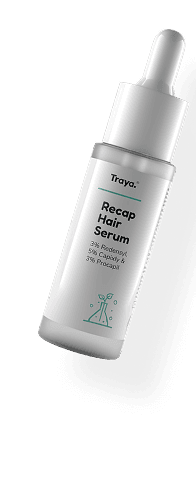
Safe.
Scientific.
Vegan Friendly
Herbal
Doctor Recommended
No Side Effects
Dermatologically Tested


